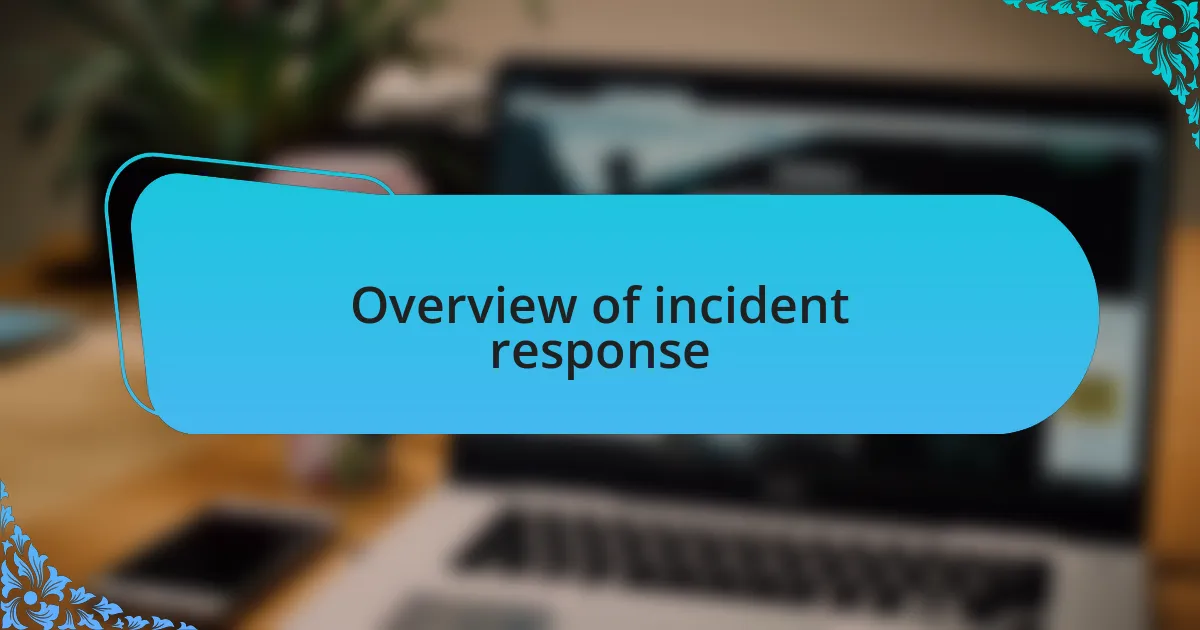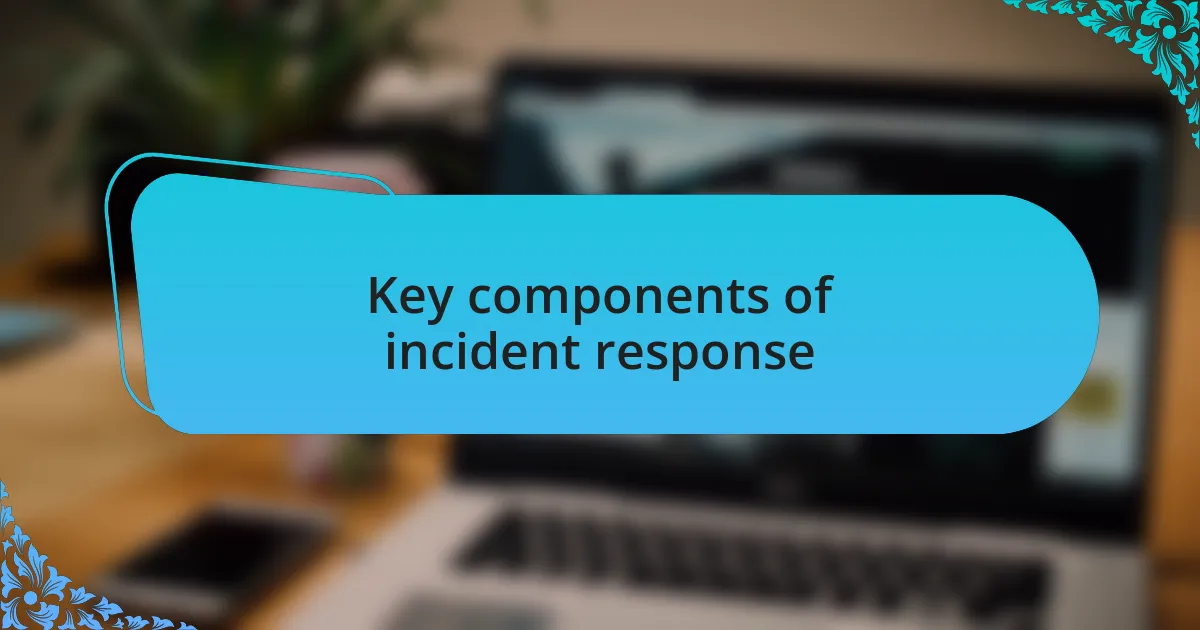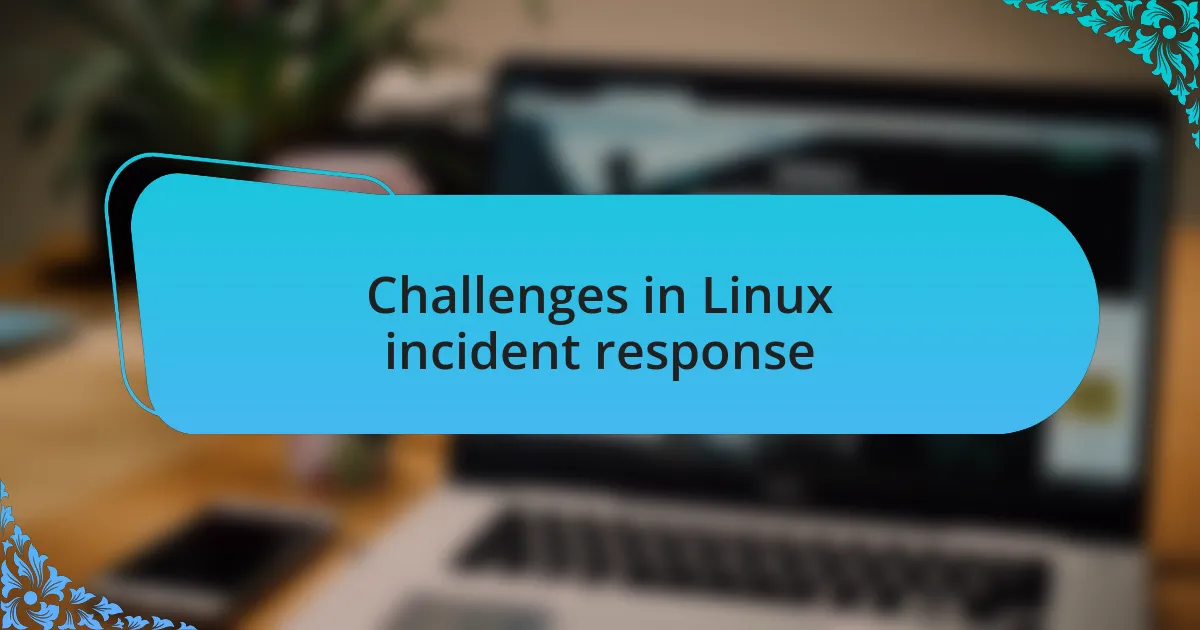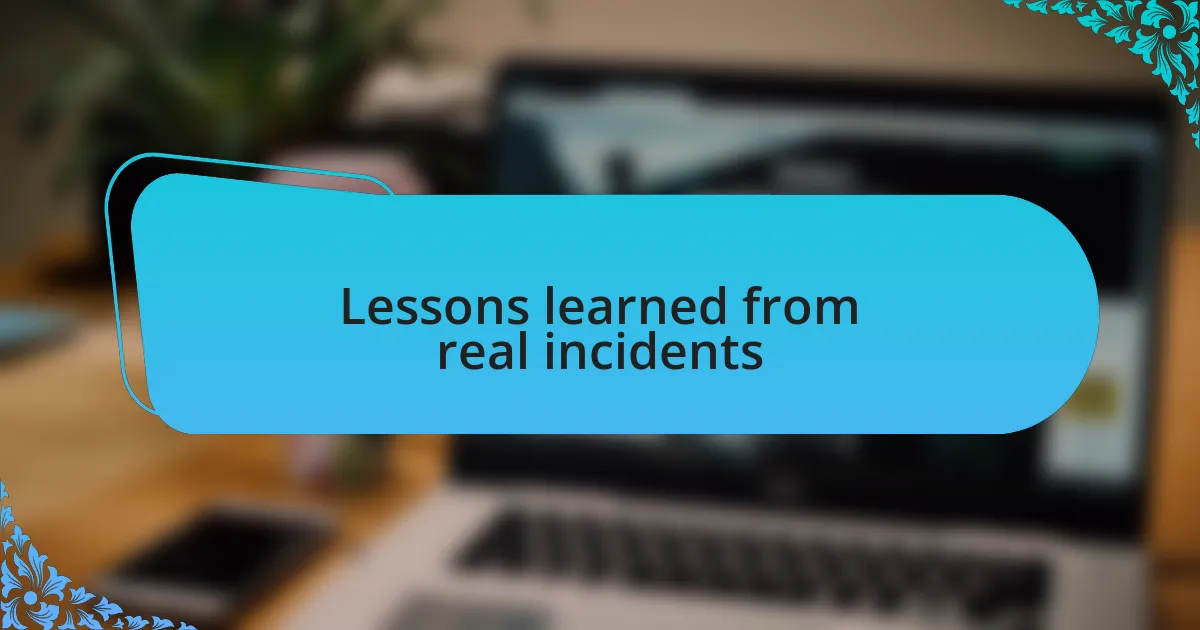Key takeaways:
- An effective incident response plan is crucial for mitigating security breaches and fostering a security-conscious culture.
- Preparation, timely detection, and thorough response and recovery processes are key components of incident response.
- Challenges in Linux incident response include diverse system configurations, overwhelming log volumes, and limited personnel resources.
- Clear communication and post-incident reviews are vital for improving response strategies and team effectiveness.

Overview of incident response
Understanding incident response is crucial for maintaining the security of your Linux system. I remember the first time I faced a security breach; it was daunting. The unexpected rush of panic made me realize just how vital a solid incident response plan is.
When a security incident occurs, having a structured approach can mean the difference between a minor blip and a significant data breach. I often ask myself, “What steps should I take first?” It’s about isolating the issue, assessing the damage, and making informed decisions quickly. Each situation can be unique, which adds to the complexity but also to the learning experience.
An effective incident response plan doesn’t just protect against threats; it also fosters a security-conscious culture. Reflecting on my own journey, I’ve learned that each incident serves as a valuable lesson. Engaging with your team after every event, sharing insights, and discussing what went wrong can make all the difference. How prepared are you to handle the next potential incident?

Key components of incident response
When it comes to incident response, several key components play a pivotal role. First and foremost is preparation. I still vividly remember a night spent developing a robust incident response plan, fueled by the anxiety of a past breach. It was in that moment I realized that being ready is the ground zero of effective response; knowing who to call, having protocols in place, and conducting regular drills truly makes a difference when the unexpected strikes.
Another vital component is detection and analysis. I recall a time when a colleague noticed unusual traffic patterns on our server, which led to a swift investigation. This experience reinforced my belief that timely detection can thwart potential damage. Ask yourself: How quickly can you identify anomalies in your system? The quicker you detect an incident, the more effective your response will be.
Finally, there’s the response and recovery phase. I once faced a ransomware attack that forced me to act fast. Reviewing logs, isolating affected systems, and restoring from backups were critical steps. The lesson I took away? The recovery process is just as important as the immediate response. It’s essential to reflect on the incident after the fact, learning from every hurdle to better prepare for future challenges.

Challenges in Linux incident response
When it comes to Linux incident response, one of the most significant challenges I’ve encountered is the vast diversity of distributions and configurations. Each system can have its own unique security settings and tools. I remember trying to troubleshoot an issue on a server running a less common distribution; it felt like searching for a needle in a haystack. How do you ensure your incident response plan accounts for all the variations? It often requires extensive documentation and familiarity with multiple systems, which can be a daunting task.
Another hurdle I’ve faced is the sheer volume of logs that Linux generates. It’s often overwhelming to sift through endless streams of information to find relevant clues during an incident. I once spent hours poring over logs, trying to piece together a timeline, only to realize I had overlooked crucial entries. This experience taught me the importance of having efficient log management tools in place. Have you ever felt lost in a sea of data? I know how critical it is to have the right tools to filter and analyze logs swiftly.
Finally, the challenge of limited personnel can’t be understated. In many environments, teams are small and multi-tasking is the norm, which can stretch resources thin during an incident. I recall one tense evening when our small team had to handle multiple alerts simultaneously. It was a test of focus and prioritization—one I wouldn’t want to repeat. How can we effectively manage resources while still responding promptly? Establishing roles and responsibilities ahead of time can make a world of difference when chaos ensues.

Lessons learned from real incidents
One significant lesson I’ve learned from real incidents is the critical importance of maintaining clear communication channels. I remember a time when our team faced a DDoS attack, and urgent information wasn’t relayed effectively between departments. This lack of clarity not only prolonged the incident but also heightened stress levels among team members. How can we manage chaos if we aren’t all on the same page? Ensuring everyone knows their responsibilities and having a centralized communication platform can make a substantial difference when every second counts.
Another key takeaway is the necessity of conducting post-incident reviews. After dealing with a major breach, our team gathered to analyze what went wrong and how we could prevent it in the future. This reflective process uncovered gaps in our monitoring systems that we hadn’t noticed before. Have you ever thought about how valuable those debriefs could be? It’s during these evaluations that true learning happens, allowing teams to adapt and strengthen their defenses moving forward.
One often-overlooked lesson is the need for continuous education and training. I once watched a colleague struggle during an incident simply because they were unfamiliar with certain command-line tools that could have expedited our response. It was a frustrating experience, not just for them, but for the entire team. How can we expect our staff to be effective if we don’t invest in their development? Regular training sessions, including simulations and hands-on practice, can prepare teams to react efficiently when moments of crisis strike.